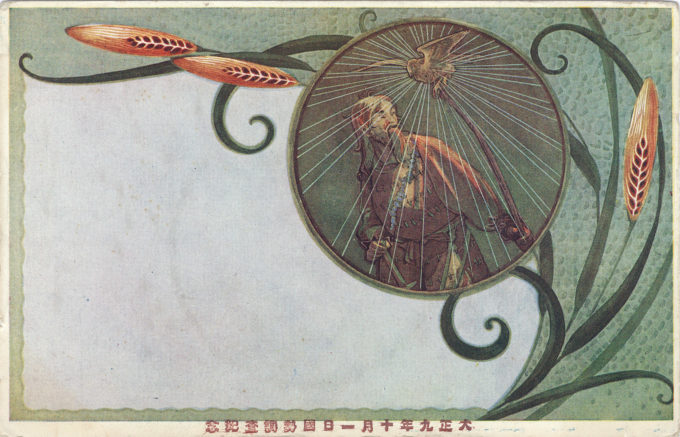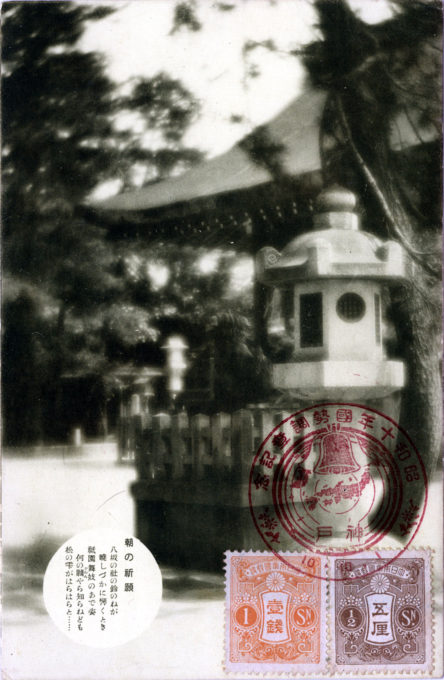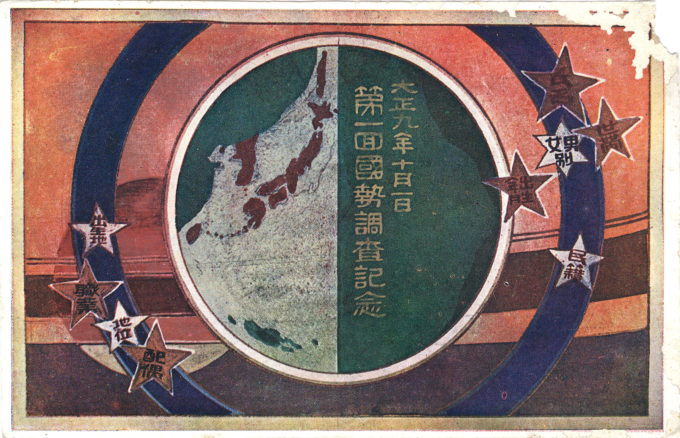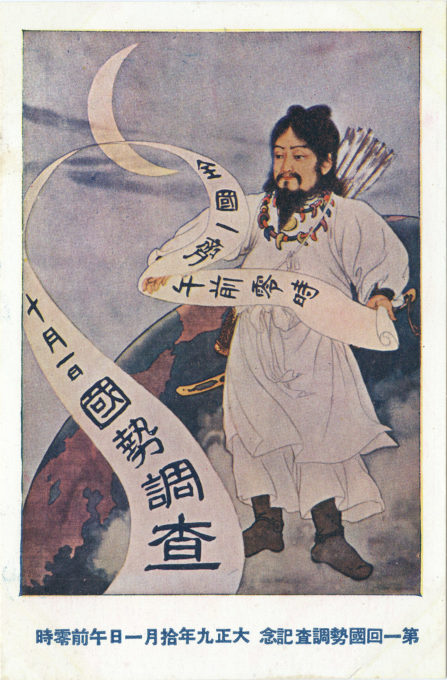
First national census commemorative postcard, 1920. The postcard is captioned with the date of the first census: Taisho 9.10.1 (Oct. 1, 1920).

National Census commemorative postcard, 1935. The commemorative stamp is dated Showa 10.10.1 (Oct. 1, 1935).
The population of Meiji Restoration-era Japan was estimated to be 34,985,000 on January 1, 1873. At that time, the Meiji government had established a uniformed, but imperfect, registered system of koseki [family registries] which required all Japanese households to report births, acknowledgements of paternity, adoptions, deaths, marriages and divorces of Japanese citizens to their local authority, who compiled such records encompassing all Japanese citizens within their jurisdiction. (The koseki system was an unreliable tabulation because, among other reasons, it did not quantify the number of outcastes, including eta, vagabonds, etc.)
The first modern national census, based on a centralized and full survey of inhabitants, was conducted all over the Empire of Japan in 1920 (except in Korea, where an uprising against Japanese rule had erupted in 1919), and was conducted every five years thereafter. In this census not only the age, sex and marital status was counted but also individual occupational and industrial status of the population, making clear for the first time the distribution of labor among various industries and occupations.

First Population Census commemorative postcard, 1920. The populations of the Home Islands (Hokkaido, Honshu, Shikoku, Kyushu) were counted along with Imperial Japan’s colonies and possessions: Chosen (Korea), Formosa (Taiwan), Nansei-shoto (Ryukyu Islands), and Karafuto (Sakhalin Island).
1920 Census:
National (Home Islands) population: 55,963,053
Empire population: 76,988,379 (except Korea)
Empire + Concessions + Mandates: 78,208,378
Tokyo population: 2,173,201
1935 Census:
National (Home Islands) population: 69,254,148
Empire population: 97,697,555
Empire + Concessions + Mandates: 99,456,818
Tokyo population: 5,875,667


